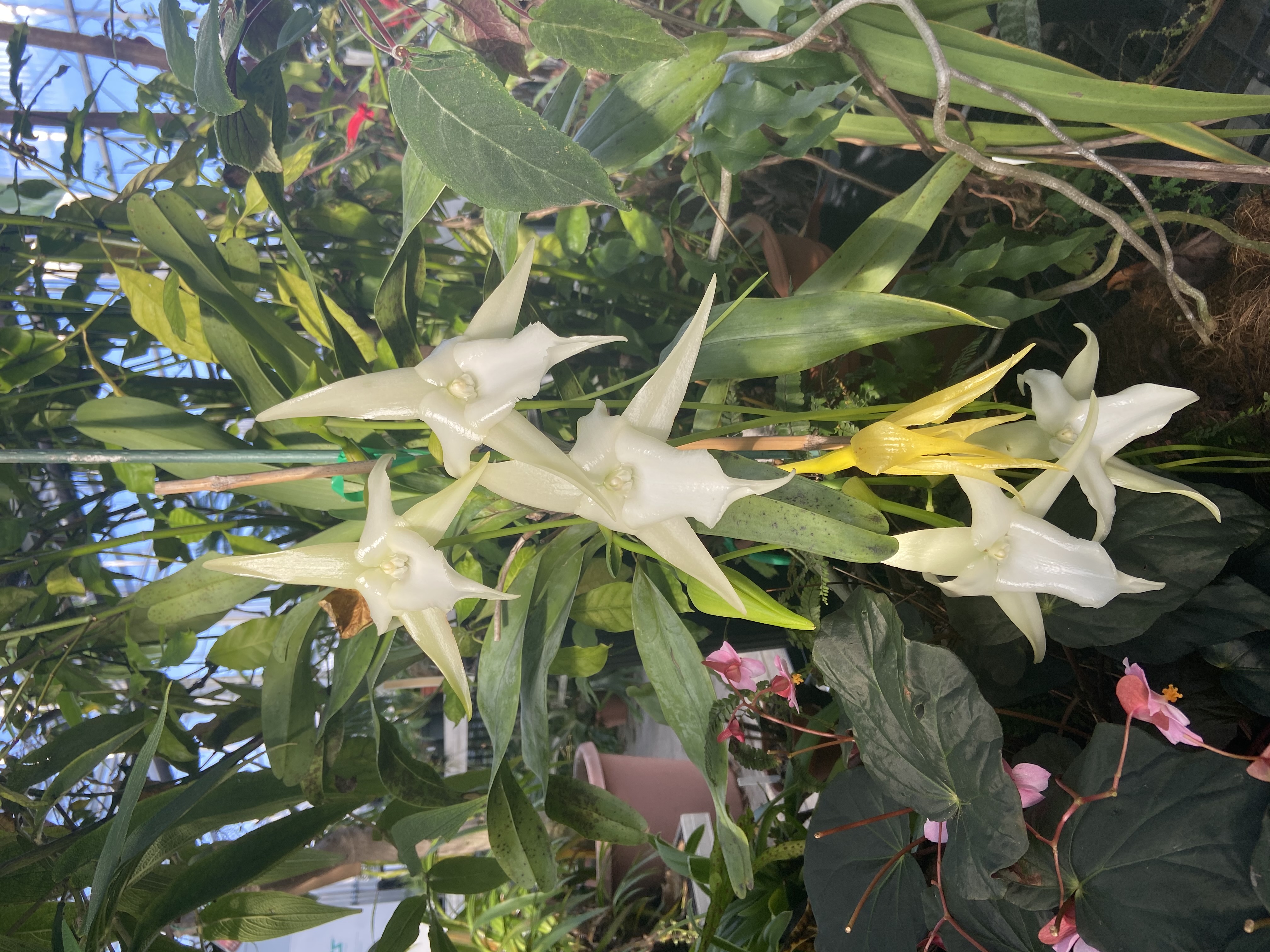
Welcome in the New Year with Darwin's orchid, the quintessential orchid for a teaching botanical collection. Angraecum sesquipedale, this white star-shaped waxy flower emits a deep musk and sweet gardenia with a hint of vanilla scent at night. It is difficult to grow and easy to kill but the number of blooms on ours indicates it is doing well in our new building. In the wild, it grows on trees near the east coast of Madagascar, thriving in strong morning light. Specimens can grow large. The strength of the tree or branch it is growing on limits the size in the wild, larger plants are found lower on trees, but high enough to escape ground dwelling herbivores.
Here is the story of Darwin's orchid: Darwin was a serious student of orchids, he examined and tested with them as he developed his theory of evolution. In 1862, Darwin got a sample of this orchid flower from James Bateman, an orchid grower in England, with it's 12 inch spurs holding nectar. He proposed that there had to be a moth in Madagascar with a proboscis (tongue-like part) long enough to pollinate it. None such moth was known at that time and many scientists ridiculed him for this wild prediction. Nevertheless, Darwin wrote this theory in On the Various Contrivances by Which British and Foreign Orchids Are Fertilized by Insects (1862), a book about his experiments with orchids published three years after "On the Origin of Species" (1859). Darwin believed that this star orchid had developed its long nectar tube as an adaptation to help ensure pollination because orchid flowers have their pollen in a single mass and cannot disperse it as other flowers do. Orchids need their specific insect pollinators to survive. Sure enough, about four decades later in 1903 an insect with the exact physical characteristics that Darwin had predicted was discovered, the Hawk Moth. (Its scientific name is Xanthopan morganii praedicta, which is Latin for ‘predicted moth’ in honor of Darwin.) The star orchid turned out to be a perfect example of coevolution, where two organisms, insect and flower, affect each other’s ability to grow and adapt.